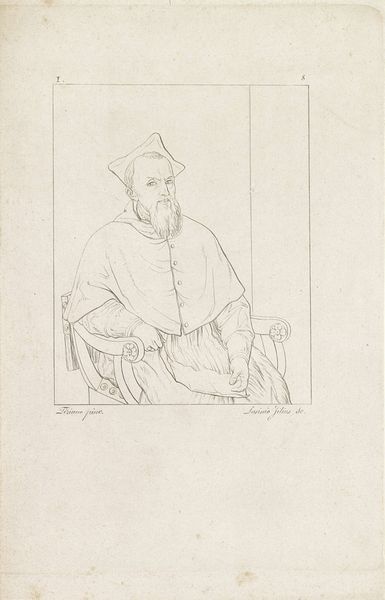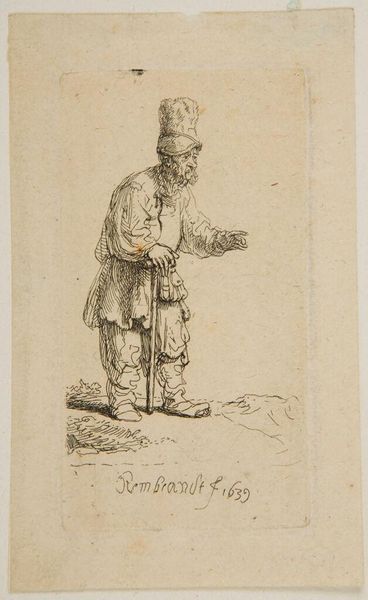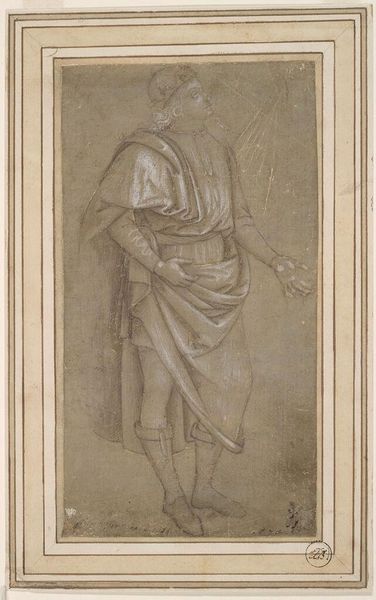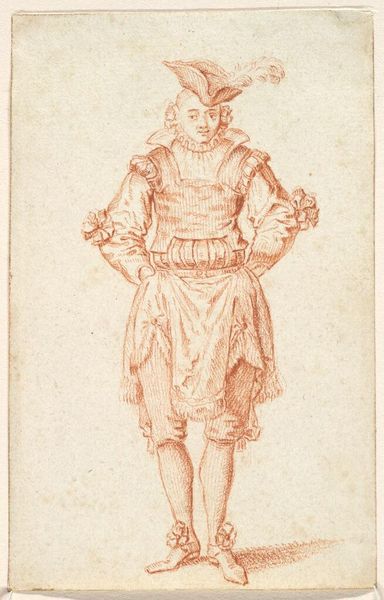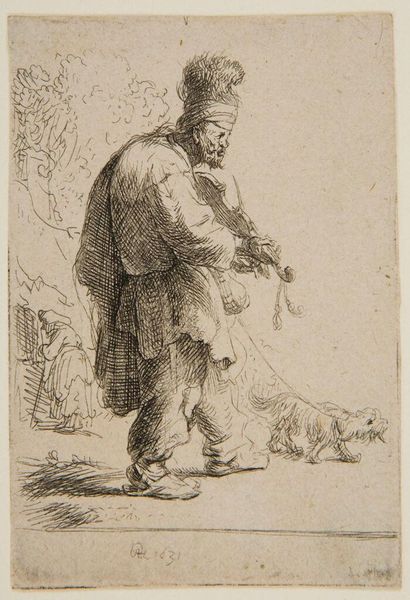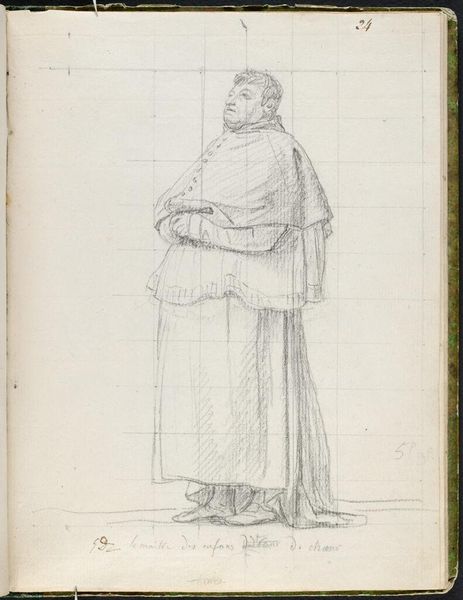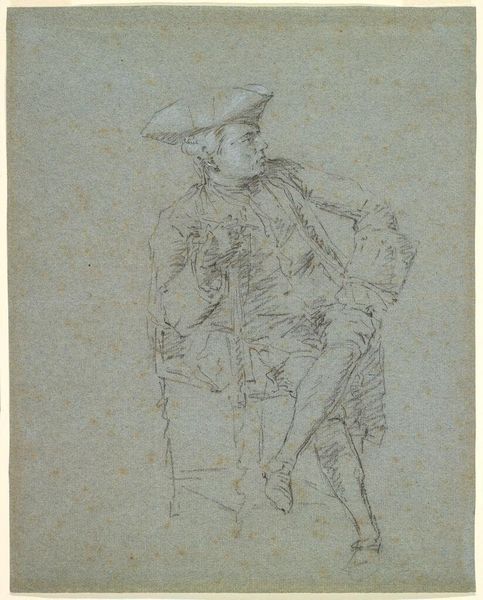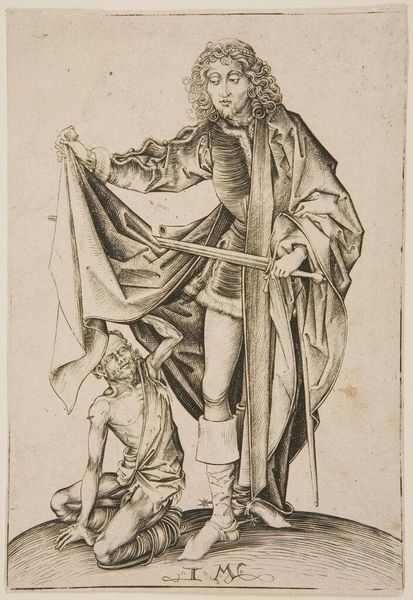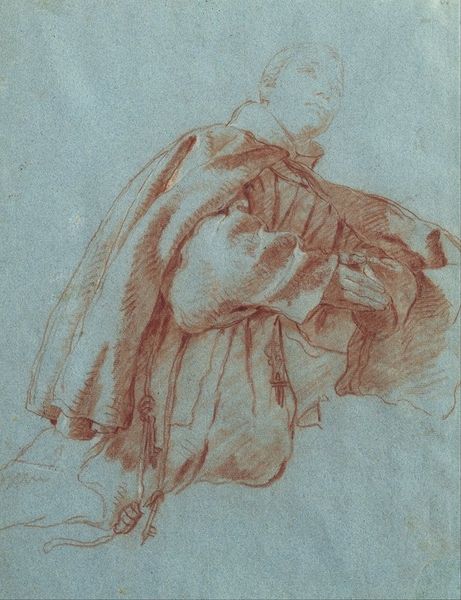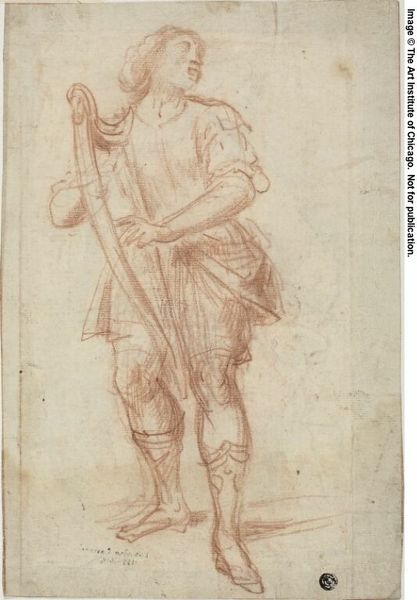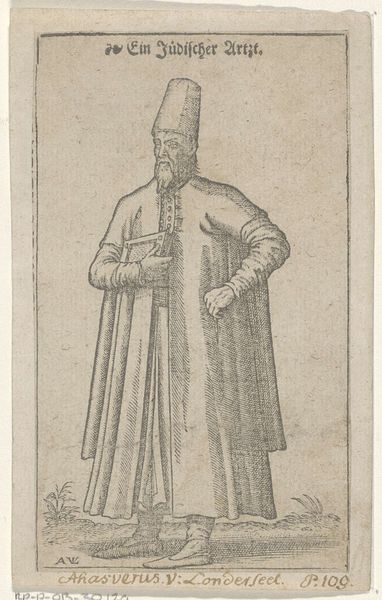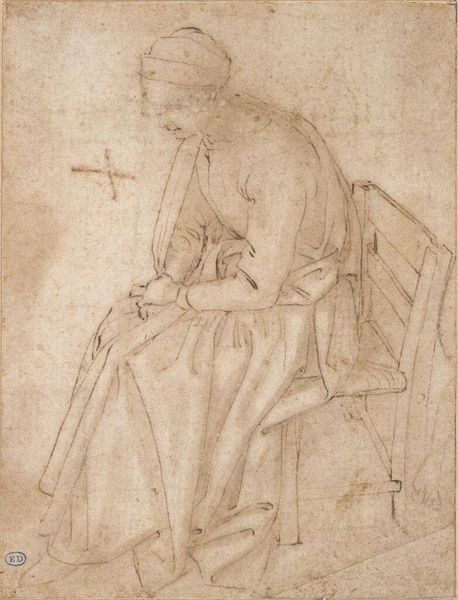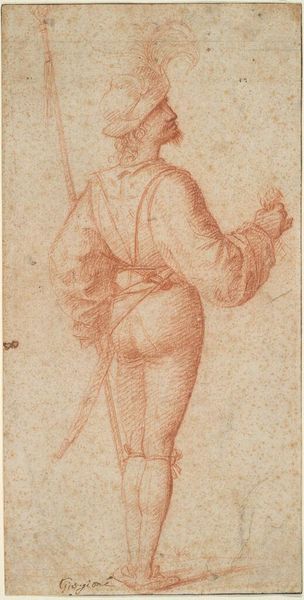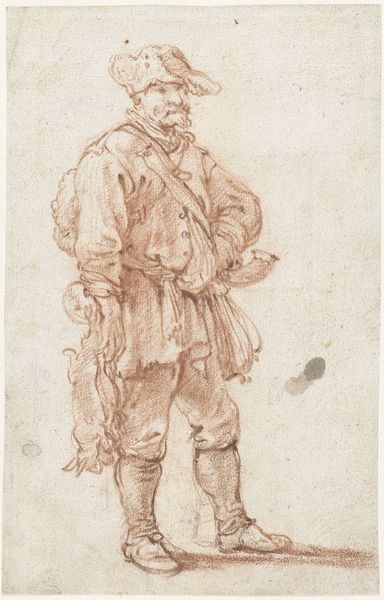
drawing, pencil
#
portrait
#
pencil drawn
#
drawing
#
pencil sketch
#
charcoal drawing
#
pencil drawing
#
sketch
#
pencil
#
portrait drawing
#
history-painting
#
italian-renaissance
Copyright: Public domain
Editor: Here we have Gentile Bellini's "A Turkish Janissary" from 1481, a drawing rendered in pencil. The figure, with his distinctive headwear, strikes me as both imposing and somehow vulnerable. How do you read this portrait? Curator: The Janissary's towering hat immediately strikes me, and acts as a potent symbol. The image recalls both the Ottoman Empire's military strength, and how its otherness would be perceived in Europe at this time. Notice, too, how the artist captures a certain humanity in the figure’s gaze. Does his expression subvert your initial reading? Editor: Yes, definitely. There's a real person there, not just a symbol of power. It's more complex than I initially thought. Is it typical for Bellini to portray subjects this way? Curator: Bellini, known for his detailed observations and cultural exchanges with the East, injects humanity into his subjects. I believe the way the face is rendered provides an intimate feel for the subject; despite the clear marker of cultural identity, we can still recognize the sitter as an individual. Is this how you see it? Editor: Yes, now I see it more clearly! The contrast between the general and the specific, the powerful and the vulnerable, is really compelling. Thanks! Curator: Absolutely. The artwork reveals not only a Janissary, but also reveals how the Janissary might have been seen and understood by the Italian Renaissance world.
Comments
No comments
Be the first to comment and join the conversation on the ultimate creative platform.
